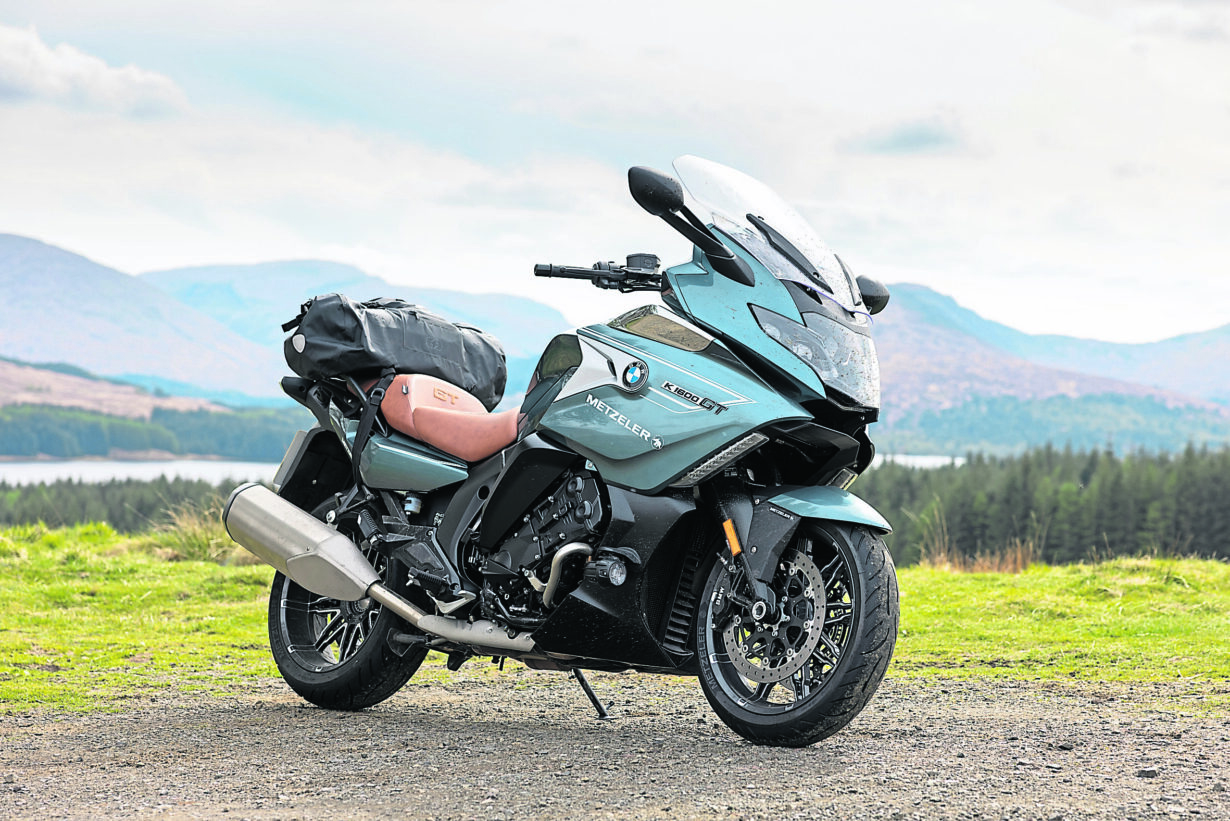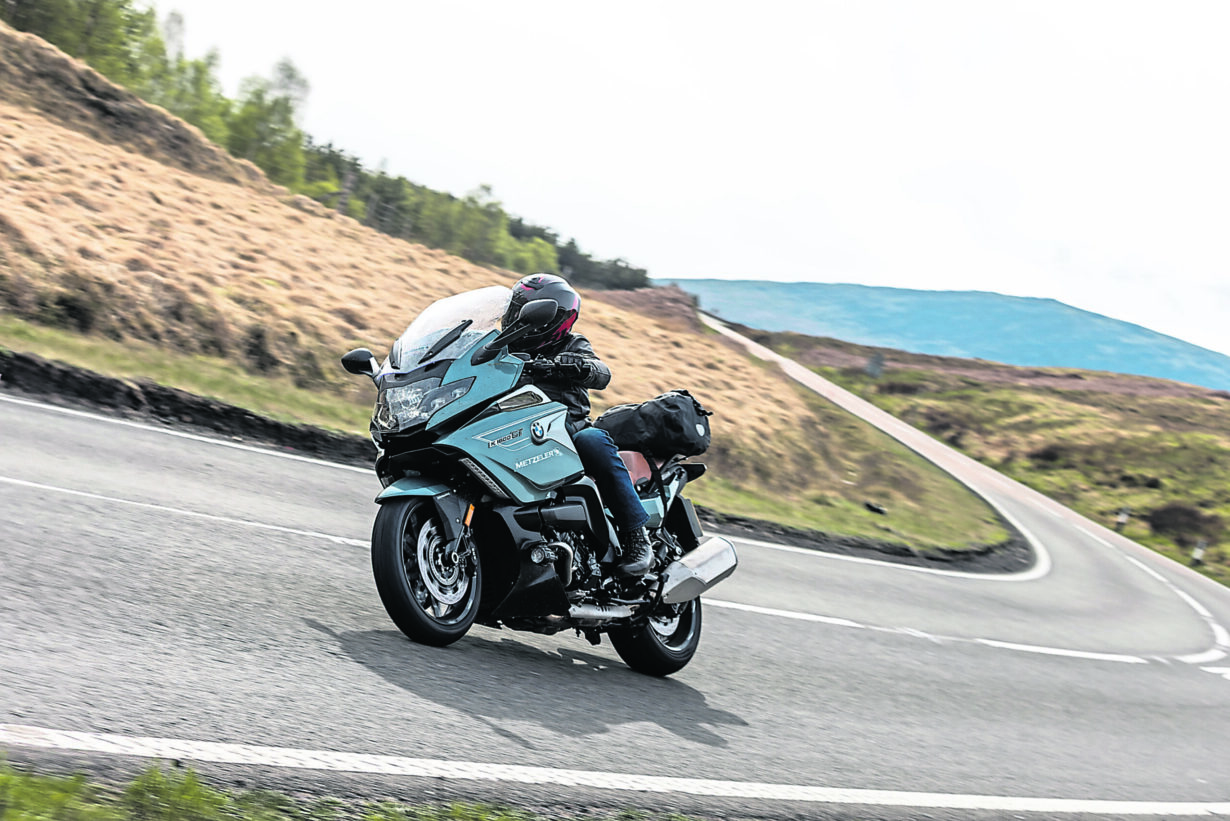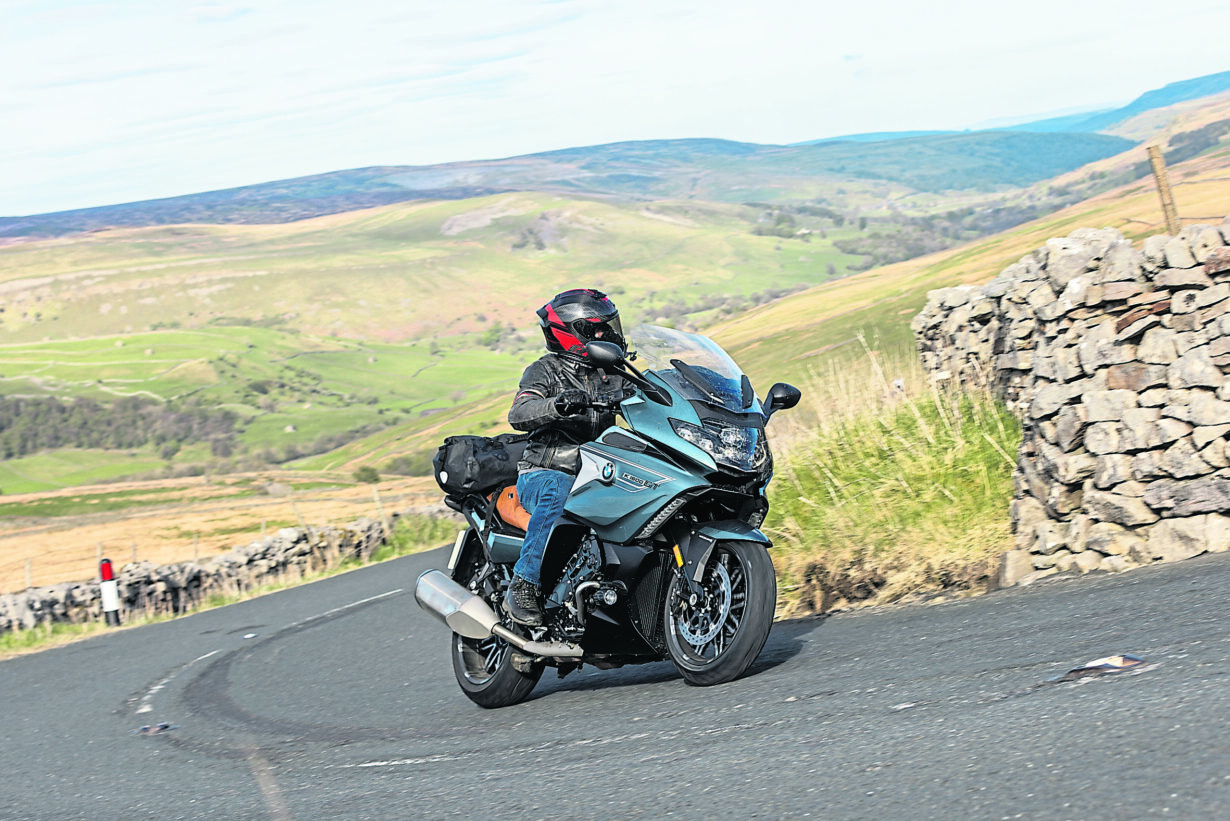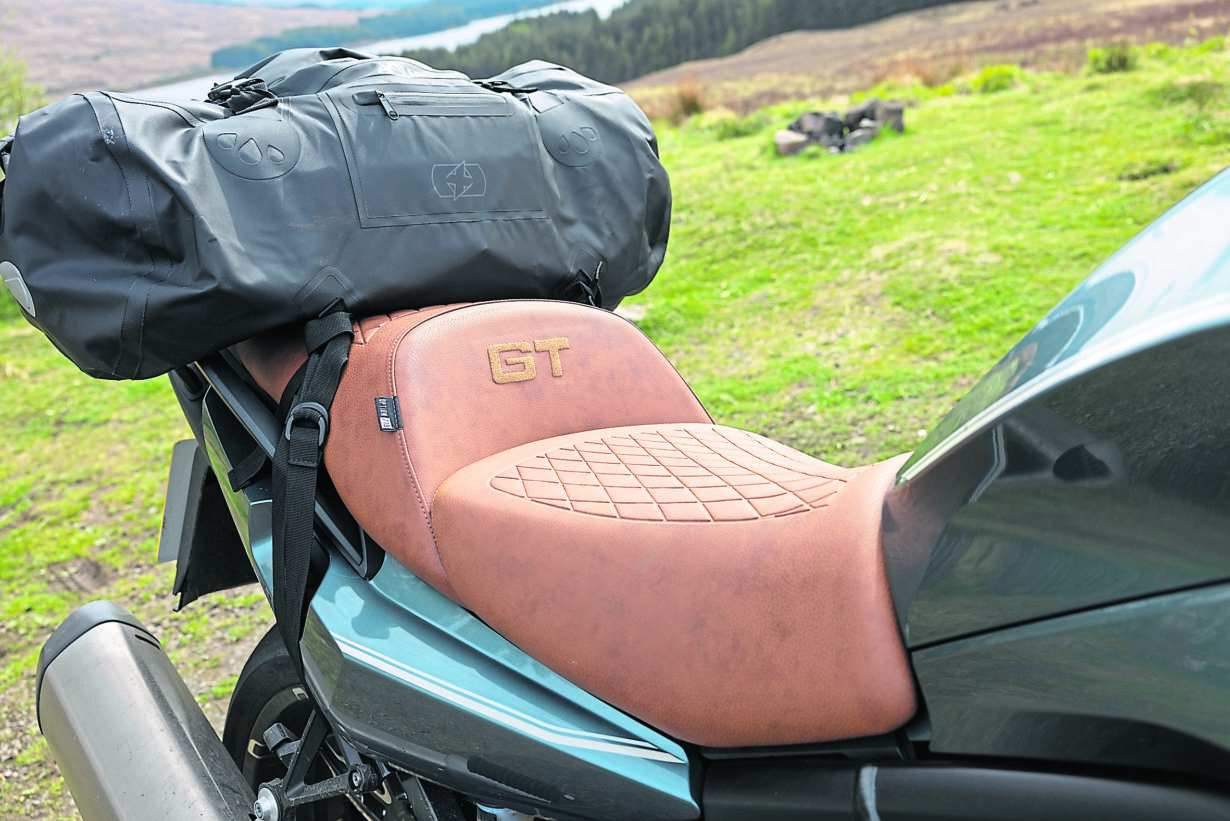Dave Manning gets to grips with the big Beemer…
Given that the ‘sports’ element of sports touring might err too much on the side of cramped rearsets and bars that put more stress on your wrists than the most extreme Only Fans sites, I opted for a bias towards the comfort side of things for our blast northwards, with a big bruiser Beemer as my steed for the trip. And although the K1600GT may, initially, appear as though it’s the old man’s choice (and, much as it pains me to say it, I was the oldest on the trip) thanks to its expansive fairing and range of comfort-inducing tech (heated grips and seat, electrically-operated screen and a radio), it’s also something of a street-sleeper as the super-smooth 1600cc powerplant creams out an impressive 160bhp.
So, while Bruce and Rich were on a pair of triples, so was I. On a pair of triples, combined together to make one inline six. An inline six with a capacity that is actually 99cc greater than the capacity of the Yam and the Triumph combined, and while that 1649cc six doesn’t make the same power as the two other bikes combined (it’s 37bhp short), it does make more torque than the two triples added together, yet weighs 96kg less than the Yam and Trumpet’s combined weight of 437kg. With a starting price of £22,395, it also costs less than if you bought both of the other bikes. So, more torque and less weight for your money!
Enjoy everything More Bikes by reading the MoreBikes monthly newspaper. Click here to subscribe, or Read FREE Online.

Although the big Beemer isn’t the first bike to be equipped with a six-cylinder engine – with Kawasaki’s Z1300, Honda’s CBX Thou and the Benelli Sei all coming before, by quite some years – it is nevertheless pretty unique in the current marketplace in having half-a-dozen pistons whizzing up and down inside its bores.
Although, aside from the number of cylinders, it is otherwise fairly conventional, with the expected level of refinement from the manufacturer, the type of bike (it being a long-legged sports tourer of traditional type), and it’s styling. Although that refinement is balanced out by an unexpected (albeit only partly hidden) level of hooliganism that the everyday man in the street would never dream of coming from such an executive type of transport.
That said, the K1600 does shout some intent when the start button is thumbed, with a loud and rorty ‘wah-ow’ from an automatic throttle blip as it fires into life. The older GS (with the 1250 Boxer twin engine) used to do a similar thing, and while it does shatter the peace of an early-morning start, it is rather characterful and signifies intent with regard to how the bike could be ridden, if you so choose…

Thanks to the buttery-smooth engine holding its power low down in the rev range, it makes its peak power of 160bhp at just 6750rpm. To put this into context, the M1000RR doesn’t make 160bhp until it hits about 11,500rpm, and makes a max torque of 76lb-ft at just over 10 grand. The big GT makes 132lb-ft at just 5250rpm (with an astounding 70 per cent of that torque available from just 1500rpm!), and has a redline at just 8500rpm.
What this adds up to is a great big bike that is deceptively fast and astoundingly good at overtaking on the public road, regardless of speed or gear selected. The only time that the low-down punch of the two triples bested the big Beemer was when I’d got lazy and was whispering around in top gear at not much more than walking pace, at which point a couple of dabs down with the left foot saw warp-speed acceleration reinstated.

Clearly, there’s a lot of mass involved here, and while the wide bars do aid swift (er) direction changes, the K16’s composure is all down to the suspension arrangement. As per all of BMW’s bigger (i.e. heavier) bikes, the GT has the Telelever front end, which remains impressive and, while it does seem to feel a little remote and ‘floaty’, it does still give a decent level of feedback so you do have an idea of how much grip that front tyre is getting, while also giving the feeling that the bike is steamrolling any lumps and bumps flat, rather than the suspension responding and allowing the wheel to move over them.
The Paralever rear (being single-sided, although the view of that stunning ‘Option 719’ forged rear wheel is only possible when the standard panniers aren’t fitted), actually has more travel than the front, a consequence of the Hossack-style front suspension not being compressed as much under braking as conventional telescopic forks.
Okay, so the bulk of the bike, and it’s more relaxed geometry, mean that it’s not exactly ideal for use as a track day toy, but it’s missing the point to even mention such a thing. If you took a track-focused bike on to some of the roads that we enjoyed (and boy, did we enjoy them!), you’d have been tank-slapped into the nearest beck with a spine jack-hammered into a pulp.
The GT dealt with the lumps and bumps, gravel and grit with ease, with the self-levelling suspension undoubtedly helping to a certain degree, in particular the part of the ESA that automatically adjusts not only the damping while on the move, but also front and rear preload as well, all according to feedback from the shocks and 6-axis IMU. Absolutely perfect for those times when you’re riding over bumpy moorland roads before feeding straight on to sweeping A roads and then die-straight motorway. No need for compromise, no need to change settings, just keep riding and let the bike work that all out itself.

Perhaps the best way of explaining the GT’s abilities is to point out that, after the two days of exploring some entirely inappropriate and very exciting roads on the way to Fort William, the return trip was done in one hit, stopping only for fuel and a couple of photographs, with the 425 miles covered in under eight hours. And I could have turned round and gone straight back, such was the comfort. And I bet Bruce or Rich couldn’t say that with their triples…
Boxout> Specs: BMW K1600GT
Engine:
Type: 1649cc, liquid-cooled, 6-cylinder
Bore x Stroke: 72mm x 67.5mm
Compression: 12.2:1
Claimed Power: 160bhp @ 6750rpm
Claimed Torque: 180Nm @ 5250rpm
Chassis
Frame: Bridge-type, aluminium frame
F Suspension: Semi-active, Duolever system
R suspension: Semi-active Paralever
Front brakes: Four-piston monobloc calipers, 320mm discs
Rear brake: Twin piston caliper, 320mm disc
Electronics.
Riding Modes: Yes
Traction Control: Yes
Slide Control: No
ABS: Yes
Quickshifter/Autoblipper: Yes
Wheelie Control: No
Launch Control: No
Pit Limiter: No
Cruise Control: Yes
Dimensions:
Wheelbase: 1618mm
Seat Height: 810-830mm
Wet Weight: 343kg
Fuel Capacity: 26.5litres
Info:
Price: £22,395 (from)From: www.bmw-motorrad.co.uk


